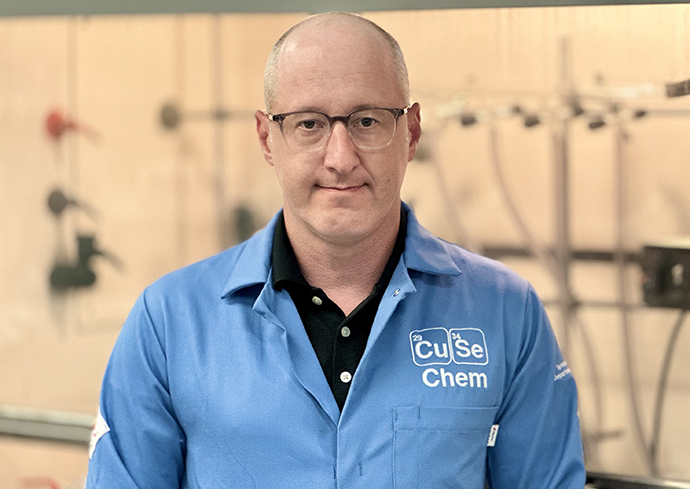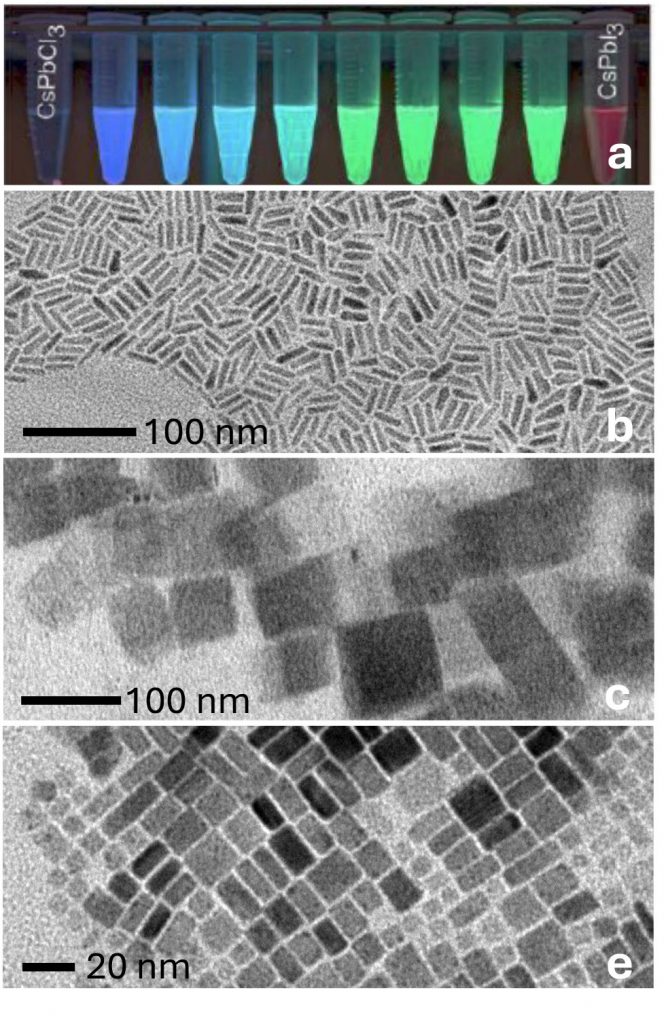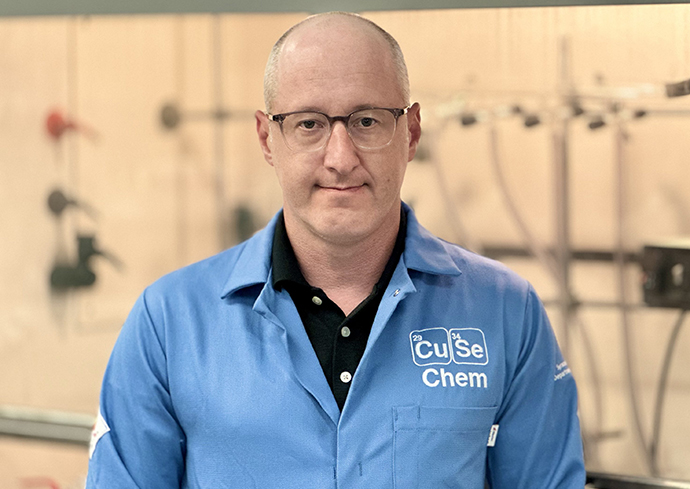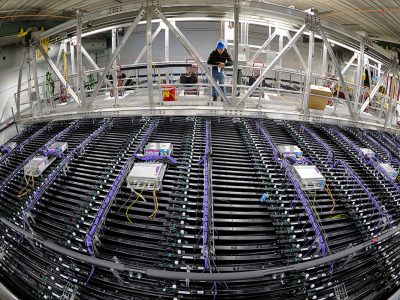
Tiny but mighty semiconductors named Quantum dots (Qdots) could someday drive hyper-powerful computers.
Qdots are crystals squeezed in a space just a few nanometers in diameter. They are used today in products such as solar cells or LEDs and work by either absorbing or emitting light with high efficiency. The amount or color of the light is fine-tuned by Qdot dimension, chemical composition and crystal structure, which is designed by chemists in the lab or at the factory.
These applications rely on the excitation or relaxation of an electron in what is called “quantized” energy levels, but “the future of Qdots is not about bright colors or how much electricity they produce,” says Mathew Maye, professor and department chair of chemistry at Syracuse University.
Instead, the future is about what happens to the electron’s spin while in those energy levels—measuring or manipulating it in new ways.
For example, each electron in an atom has one of two spin states, “up” or “down,” which describes its orbit. Spins can then be “paired,” a situation where a spin-up electron is combined with a spin-down one or un-paired when a single electron is left, which is either spin-up or down. The amount of un-paired electrons affects a material’s magnetic property. When a single electron is excited in a Qdot, it should maintain the same spin, but there may be ways to engineer or flip its spin in the future.
Such ability will provide new pathways in communications and information storage, leading to powerful quantum computers and important cryptographies that use spin states to store information instead of the “1” and “0” bits of traditional computers.

To do this, Maye is partnering with Brookhaven National Laboratory and its Center for Functional Nanomaterials, on a grant from the U.S. Department of Energy (DOE), to manufacture and test this new generation of Qdots.
“We proposed to design new alloy and magnetic Qdots whose composition or dimension allow the electron to be more easily measured or manipulated by external stimuli,” says Maye. “This requires thinking about how to induce polarization or which energy levels to add in order to trap, manipulate or transfer the electron during excitation.”
But synthesizing such Qdots is just one challenge because electron excitation and transfer is a very fast process—fractions of a fraction of a nanosecond, or, to put it precisely, on the order of pico- (10-12) to nano-seconds (10-9)—and spin is even harder to measure, requiring low temperatures, magnetic fields and higher precision instruments.
That is where scientists at Brookhaven have a very important role. They design, build and acquire such “ultrafast” instruments that allow researchers to measure these processes. “We will be collaborating closely with experts there,” says Maye.
This project will provide research opportunities for Syracuse students in materials chemistry, lithography and quantum computing.
“I’m excited to train our undergraduate students and graduate trainees to not only use our chemistry to design and make these new Qdots, but also travel with them to Brookhaven to do their own state of the art measurements.” says Maye.
Story by John H. Tibbetts



